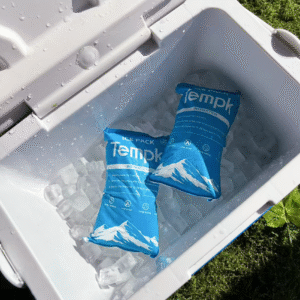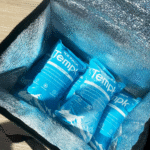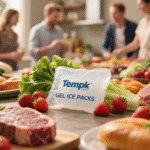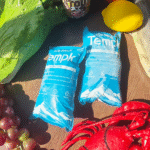Pack of 48 Dry Ice Ice Pack: How to Choose in 2025
If you’re deciding whether a pack of 48 dry ice ice pack fits your shipping mix, start with two facts: dry ice typically burns 5–10 lb per 24 hours, and gel/PCM packs hold tight 2–8 °C bands when you can’t risk freezing. This guide shows how to size, vent, label, forecast, and train so you hit temperature targets with less waste—based on a consolidation of your three draft articles.

This guide will help you solve:
-
What’s inside a pack of 48 dry ice ice pack? Clarify bag types, gel packs, and use-cases.
-
How many shipments can one case support? Use simple formulas and lane recipes.
-
How do you stay compliant? Get venting, UN1845 marking, and SOP checklists.
-
What about 2025 trends? See films, sensors, and predictive pack-outs that lower cost.
What does a pack of 48 dry ice ice pack actually include?
Short answer: A pack of 48 dry ice ice pack can mean two legitimate things. (1) Dry ice liners/bags—open‑mouth multi‑wall kraft or micro‑perforated film that must vent CO₂. (2) Gel/PCM ice packs—48 reusable refrigerant bricks or sheets for 2–8 °C lanes. Choose the version that matches your product’s required temperature band, hold time, and compliance profile.
Expanded: If your target is frozen (≤–20 °C), use vent-capable dry ice bags inside an insulated shipper and keep the outer container’s vent/drain unobstructed. If your target is chilled (2–8 °C), a 48‑count gel or PCM pack case offers flexible placement, stable temps, and easy reuse. In both cases, standardize pack-out recipes and label the outer shipper correctly (e.g., “Dry Ice / Carbon dioxide, solid (UN1845)” with net weight for air).
pack of 48 dry ice ice pack
Vented dry ice bags vs. gel packs for 48‑count programs
The details: Use open‑mouth kraft for blocks/slices (rugged, inherently not airtight). Use micro‑perforated film for pellets/chips (debris control while venting CO₂). For gel, 6–12 oz units are common; distribute around the load to avoid hot spots. When lanes vary, combine a small dry‑ice slab with gel to extend hold without cold shocking sensitive goods.
pack of 48 dry ice ice pack
| Choice you face | Dry ice liner (vented) | Gel/PCM pack (48‑count) | What it means for you |
|---|---|---|---|
| Temperature band | Deep‑frozen (≈ –78.5 °C airspace) | Chilled 2–8 °C | Match band to product risk |
| Compliance | UN1845 label, Class 9 (air), vent required | Non‑DG (typical), simpler | Lower paperwork with gel |
| Handling | Gloves/PPE; never airtight | Easy handling; reusable | Faster kitting for teams |
| Duration lever | Add pounds per day (5–10 lb/24 h) | Add units & insulation | Predictable cost control |
Practical tips and quick wins
-
Frozen desserts LTL (48–72 h): Dry ice blocks in open‑mouth kraft, lid notch/vent open; log net kg on label.
-
2–8 °C pharma parcels (48 h): Six 6 oz gel packs, top/bottom/sides; no dry ice (avoid freezing risk).
-
Mixed lanes: Keep a pack of 48 dry ice ice pack for the dominant modality + a secondary 24‑count SKU for spikes.
pack of 48 dry ice ice pack
Real case: A meal‑kit line moved to 48‑count standardized recipes and cut over‑icing by ~18% while maintaining targets across four hubs.
pack of 48 dry ice ice pack
How many shipments will a pack of 48 dry ice ice pack support?
Direct answer: Estimate units with one‑line math, then round up to full cases to avoid open‑case drift.
Formula (dry ice or gel units):
Dry ice planning: Start at 5–10 lb per 24 h depending on insulation and ambient. Blocks burn slower than pellets due to lower surface area. One 48‑bag case often supports ~48 one‑day frozen shippers or ~24 two‑day shippers (one liner each).
pack of 48 dry ice ice pack
Lane recipes for small parcels (apply, then validate)
-
24–36 h food, –18 to –10 °C: 3 units (or 1 dry‑ice block), top/bottom/side; maintain a lid vent gap.
-
36–48 h frozen, ≤–20 °C: 4–6 units (or 2 blocks), split above/below the tray; mark UN1845 net kg.
-
2–8 °C pharma (48 h): 6 gel packs (≈ 6 oz each), surround payload; add datalogger.
pack of 48 dry ice ice pack
| What changes | Lower bound | Upper bound | Your takeaway |
|---|---|---|---|
| Ambient heat | Mild spring | Peak summer | Add 20–30% refrigerant in heat |
| Insulation | VIP panels | Basic EPS | Better R‑value = fewer units |
| Format | Blocks | Pellets | Pellets sublimate faster |
| Staffing | Trained team | New crew | Carded recipes beat “feel” |
Pack‑out calculator (drop into your intranet):
pack of 48 dry ice ice pack
Gel packs vs. dry ice: how do you choose with a pack of 48 dry ice ice pack?
Core guidance: Use gel/PCM when goods must not freeze (vaccines, produce, chocolate) and lanes are ≤48 h. Use dry ice when goods must stay frozen and you can maintain vented packaging and labels. For long frozen lanes, combine a small dry‑ice slab with gel to slow burn and cushion temps.
pack of 48 dry ice ice pack
Rule of thumb (gel): Start at ≈ one‑third of payload weight in gel for ~48 h, then adjust for ambient and R‑value. Rule of thumb (dry ice): 5–10 lb/24 h; confirm with lane tests and dataloggers.
pack of 48 dry ice ice pack
Avoid common failure modes (long‑tail: “vented dry ice shipping”)
-
Airtight inner bags: Never heat‑seal dry ice bags; fold‑close kraft or use micro‑perfed film.
-
Blocked cooler vents: Leave drain/vent paths open; don’t tape over the relief path.
-
“Use what’s open” over‑icing: Stage full‑case multiples; issue only today’s allocation.
pack of 48 dry ice ice pack
Actual outcome: A dessert brand swapped thin film sleeves for kraft open‑mouth liners; acceptance improved and training time fell because the vent path was visible in QA.
pack of 48 dry ice ice pack
Safety, venting & 2025 compliance for a pack of 48 dry ice ice pack
Non‑negotiables: Vent every inner bag. Vent every outer shipper. Label every frozen air shipment. IATA acceptance checklists still include “package is vented.” Mark “Dry Ice / Carbon dioxide, solid (UN1845)” and the net weight (kg); Class 9 mark applies for air. Use gloves and eye protection; never store dry ice in sealed containers.
pack of 48 dry ice ice pack
SOP you can print (long‑tail: “UN1845 labeling checklist”)
-
Choose bag: kraft open‑mouth for blocks; micro‑perfed film for pellets.
-
Load and fold, do not heat‑seal; keep a visible gap.
-
Verify cooler vent/drain is open; avoid blocking with dunnage.
-
Apply UN1845 + net kg; add datalogger when validating.
-
Audit 5 boxes/line/day; reconcile open cases at shift end.
pack of 48 dry ice ice pack
2025 trends shaping the pack of 48 dry ice ice pack decision
What’s new: Pressure‑responsive films that micro‑vent at low PSI, predictive pack‑out planners that factor hour‑by‑hour ambient, mono‑material or kraft‑hybrid liners for ESG goals, and low‑cost sensors logging temperature and CO₂. Teams adopting these see double‑digit unit savings without missed holds when paired with 48‑count discipline.
pack of 48 dry ice ice pack
Latest advances at a glance
-
Smart‑vent liners: Lower rupture risk; consistent gas escape.
-
Predictive recipes: Right‑size refrigerant by lane, not by gut feel.
-
Recyclable films & kraft: Easier downstream handling and ESG reporting.
Market insight: Standardizing on a pack of 48 dry ice ice pack plus predictive recipes reduces over‑icing by 10–15% in year one for steady‑cadence operations.
pack of 48 dry ice ice pack
Frequently Asked Questions
Q1: How do I know if a pack of 48 dry ice ice pack fits my weekly demand?
If your weekly usage lands near 0.8–1.2 cases per SKU, you’ll minimize open‑case drift and shrink. Pilot on one line for 2–4 weeks and audit.
pack of 48 dry ice ice pack
Q2: Can I heat‑seal dry ice inside plastic bags?
No. Packaging must vent CO₂. Use open‑mouth kraft or micro‑perforated film; keep cooler vents open.
pack of 48 dry ice ice pack
Q3: How much dry ice should I plan for a 48‑hour frozen lane?
Start at 10–20 lb (5–10 lb per 24 h), then refine with lane tests and sensors. Blocks generally last longer than pellets.
pack of 48 dry ice ice pack
Q4: How many gel packs should I use for 2–8 °C for 48 h?
Roughly one‑third of payload weight in gel, adjusted +20–30% for peak heat or poor insulation.
pack of 48 dry ice ice pack
Q5: Do I need to label gel‑only shipments as hazardous?
Typically no; gel packs are non‑DG. Dry‑ice shipments require UN1845 wording and (for air) Class 9.
About Tempk
We help logistics teams ship colder, safer, and smarter with engineered dry‑ice liners, gel/PCM systems, and validated shippers. Our programs deliver two quantifiable wins: 15–25% lower over‑icing and fewer handling defects during peaks, backed by training, SOPs, and digital QA. Let us translate your lanes into one‑page recipes your crews can trust.























